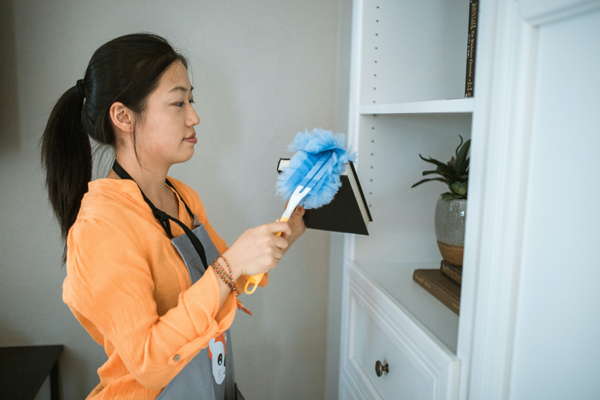Keeping your living or working space clean and organized is essential for a healthy and productive environment. However, with our busy lives, it can be challenging to find the time to clean and maintain our spaces effectively. This is where organizing cleaning schedules and checklists can be extremely helpful.
The Importance of Cleaning Schedules and Checklists
Having a cleaning schedule and checklist allows you to plan and prioritize your cleaning tasks. It helps you break down the cleaning process into smaller, manageable tasks, making it easier to tackle them regularly. By following a schedule and checklist, you can ensure that no area or task is overlooked or forgotten.
Additionally, cleaning schedules and checklists help you stay consistent and maintain a clean space over time. They provide a visual representation of your cleaning routine, making it easier to stick to and develop a habit. Regular cleaning prevents dirt, dust, and clutter from accumulating, reducing the overall time and effort required for deep cleaning sessions.
Creating a Cleaning Schedule

When creating a cleaning schedule, start by assessing your space and identifying the areas that require regular cleaning. Divide your space into different zones, such as bedrooms, living areas, kitchen, bathrooms, and outdoor areas. Assign specific cleaning tasks to each zone.
Next, determine the frequency of cleaning for each task. Some tasks may need to be done daily, while others can be done on a weekly, monthly, or seasonal basis. Consider your lifestyle, the size of your space, and the level of cleanliness you desire when deciding on the frequency of each task.
Once you have identified the zones and tasks, create a weekly or monthly calendar. Allocate specific days or time slots for each zone or task. Be realistic and practical when setting your schedule. If you have a busy day on Mondays, avoid scheduling extensive cleaning tasks for that day.
Using Checklists for Effective Cleaning
A checklist is a handy tool to ensure that you complete all the necessary tasks within each zone. Create a checklist for each zone or area, including all the specific tasks that need to be done. Here’s an example of a checklist for a bathroom:
- Clean the toilet bowl, seat, and tank
- Wipe down the sink and countertop
- Clean the bathtub or shower stall
- Scrub the tiles and grout
- Clean the mirrors and windows
- Empty and clean the trash bin
- Replace towels and refill toiletries
As you complete each task, check it off the list. This will help you stay organized and motivated, knowing that you are making progress. It also serves as a visual reminder of tasks you might overlook.
Adapting and Adjusting Your Cleaning Schedule

Remember that cleaning schedules and checklists are not set in stone. Life can get busy, and unexpected events may arise. It’s essential to be flexible and adapt your schedule accordingly. If you miss a task or a day, don’t stress over it. Simply adjust your schedule and find another suitable time to complete the missed tasks.
Organizing cleaning schedules and checklists is an effective way to maintain a clean and organized living or working space. It helps you stay consistent, prioritize tasks, and break down the cleaning process into manageable steps. By following a schedule and using checklists, you can ensure that your space remains clean and inviting, saving you time and effort in the long run.








